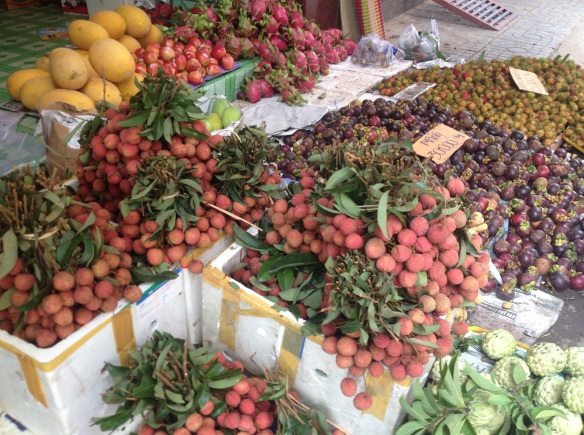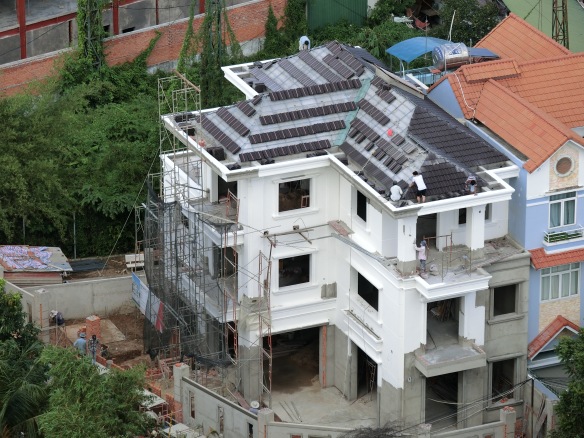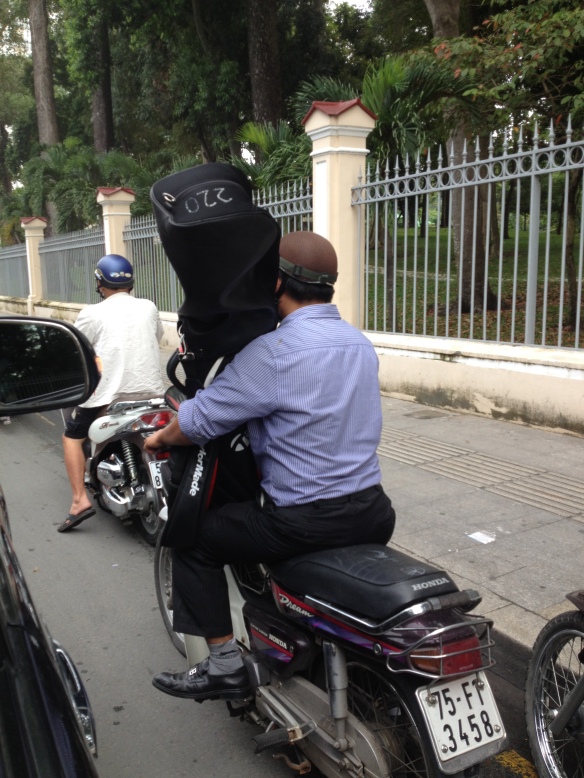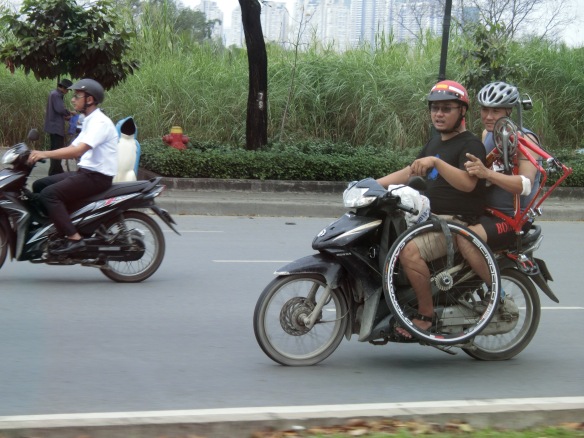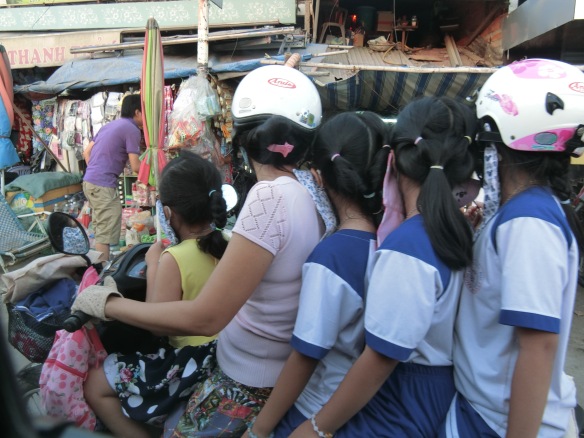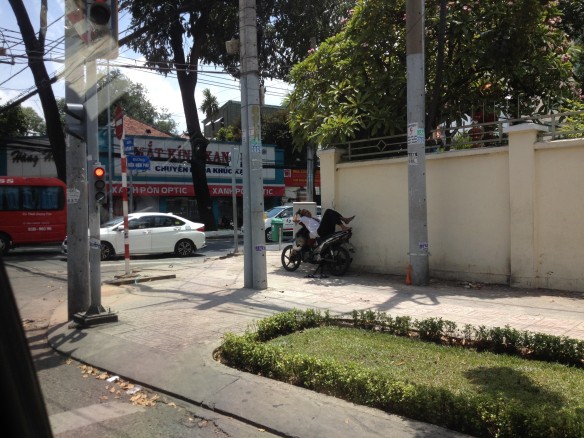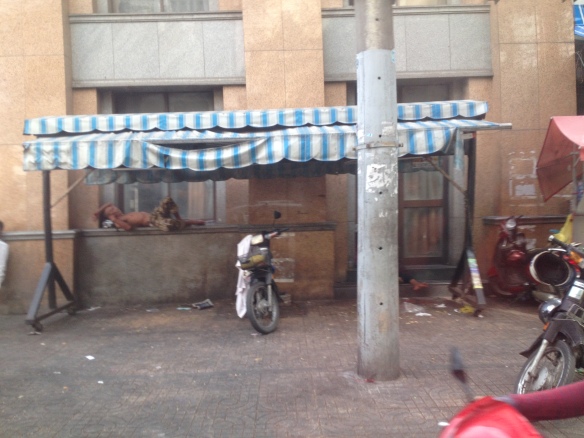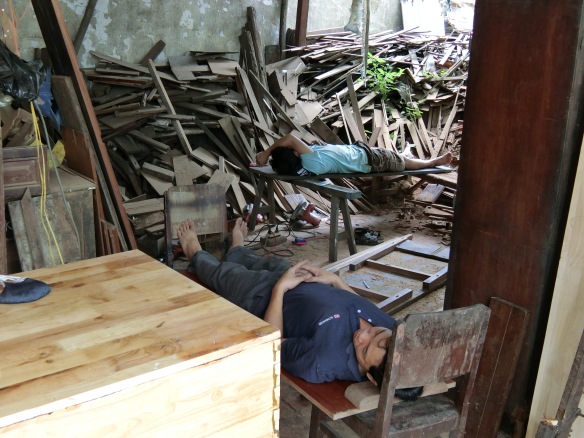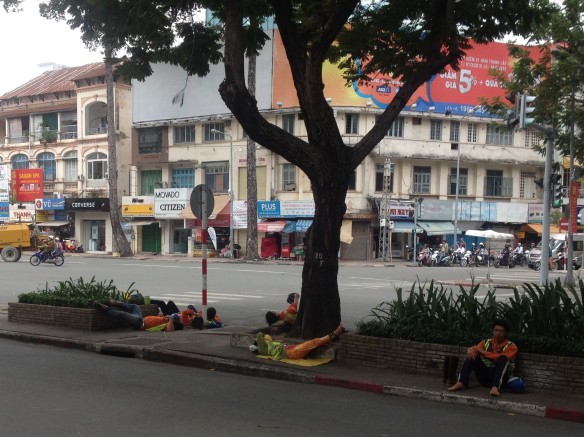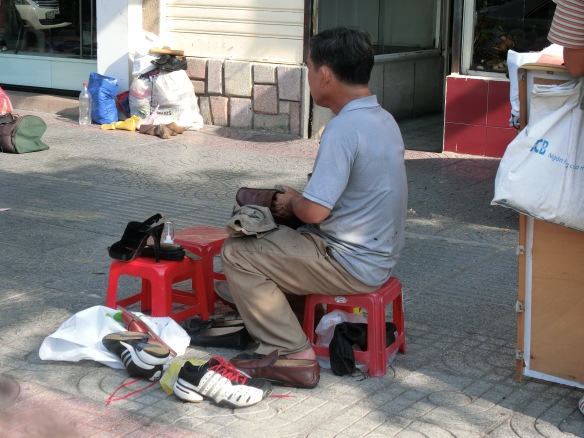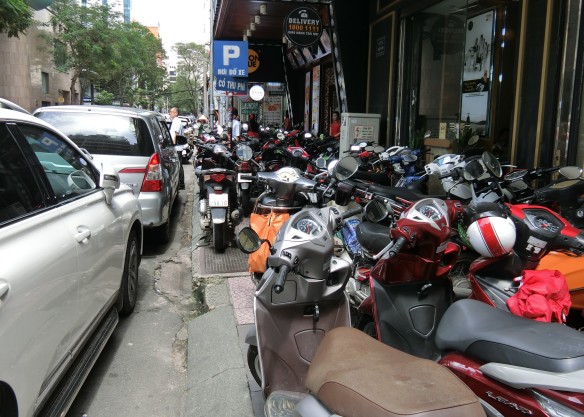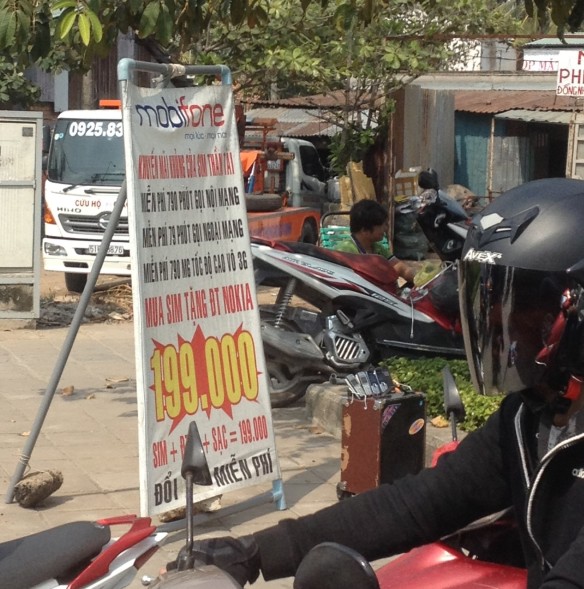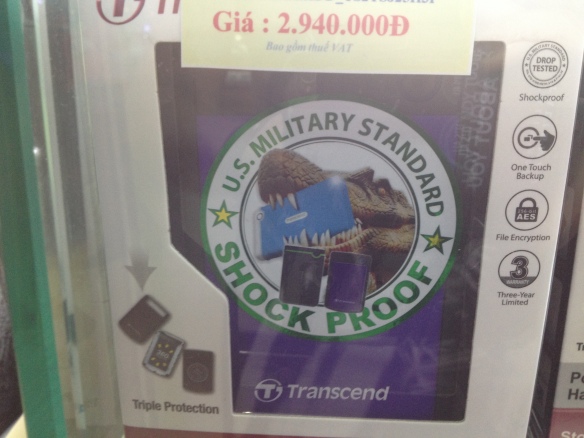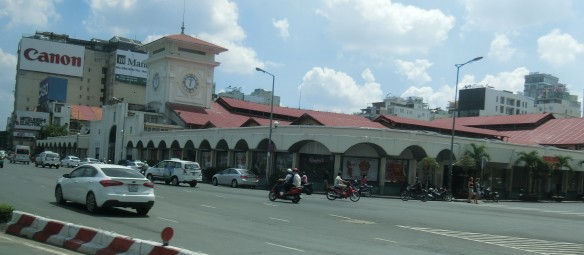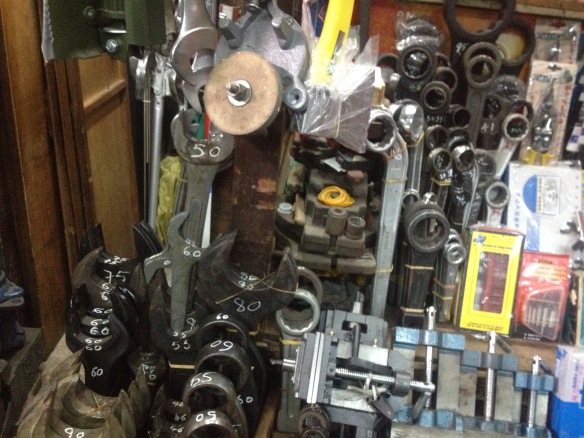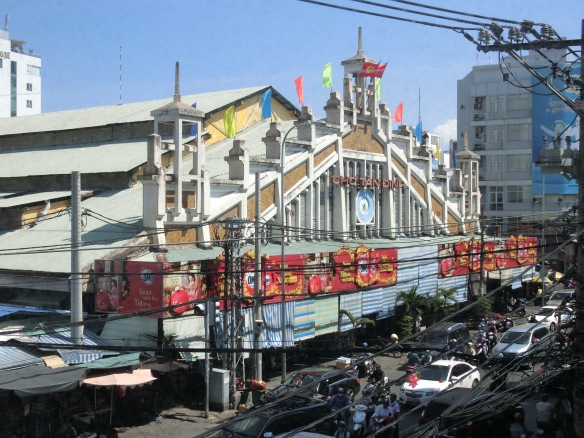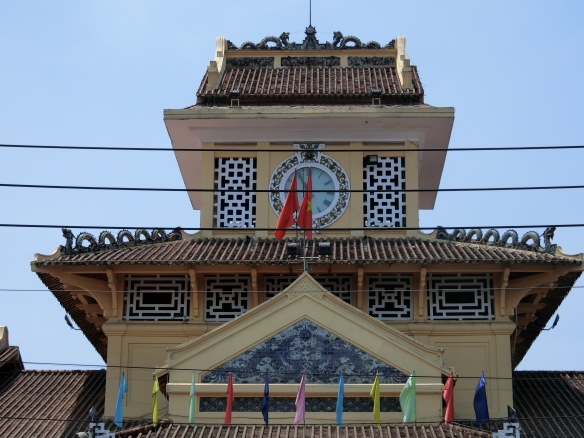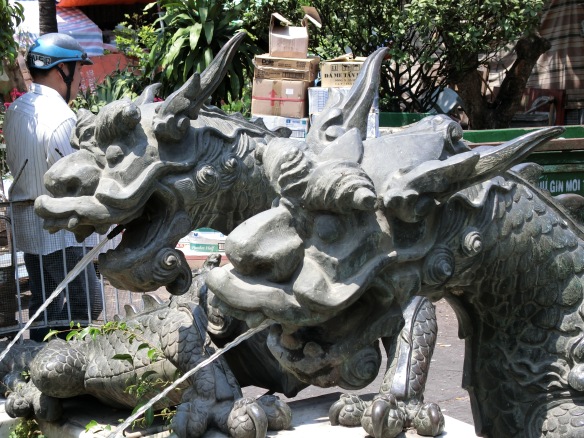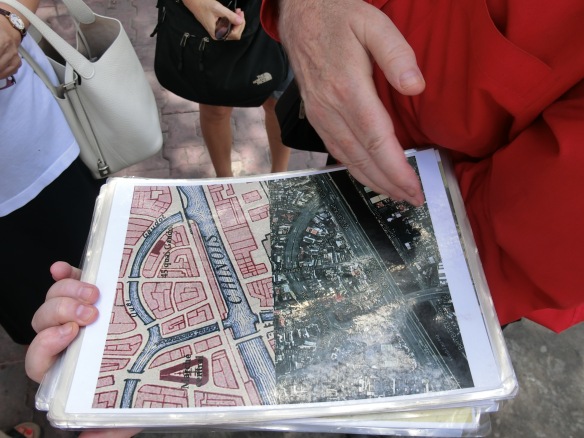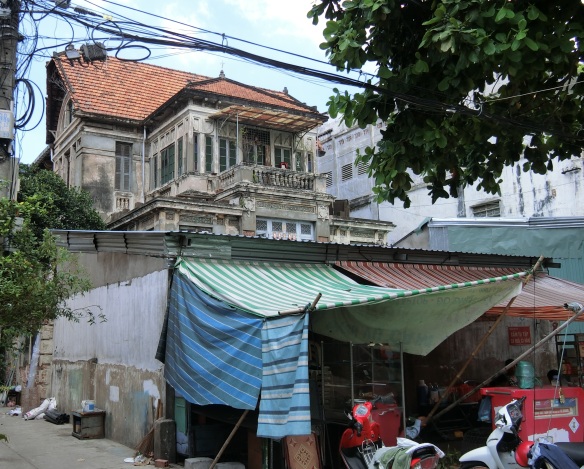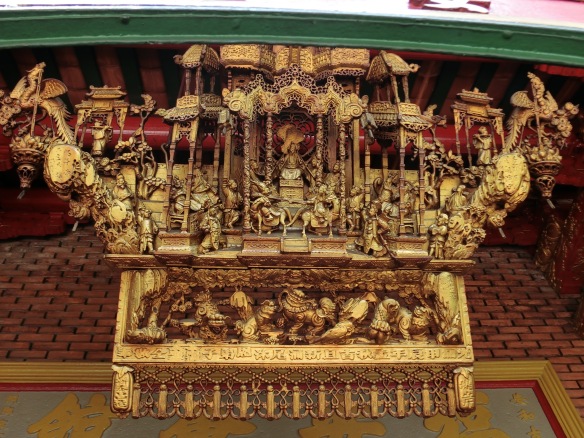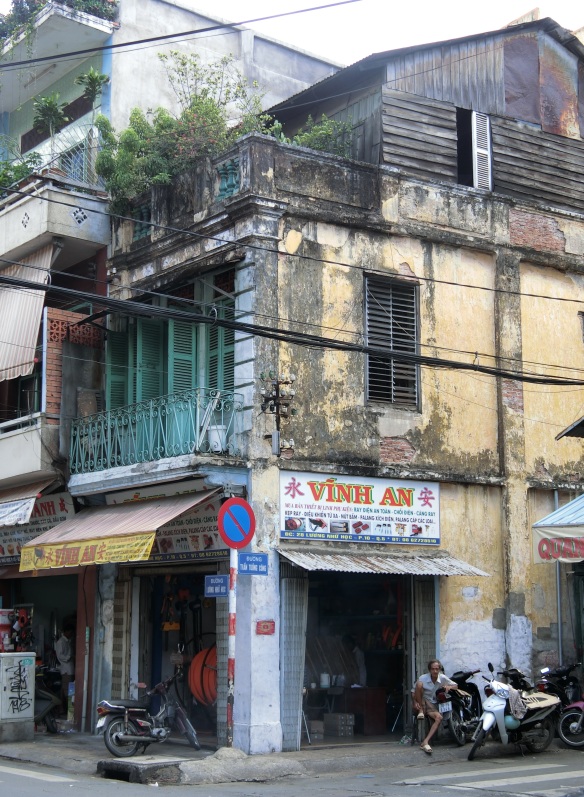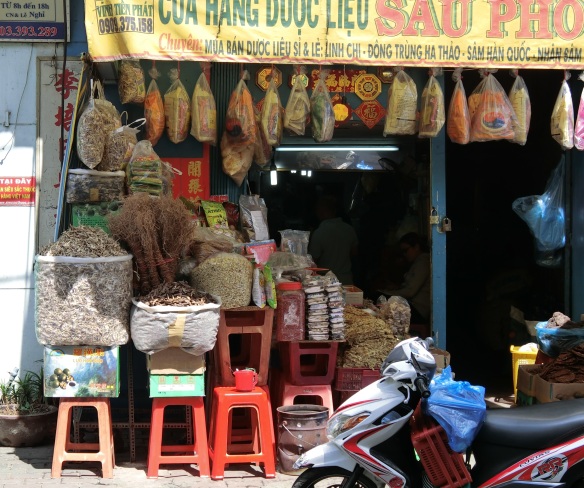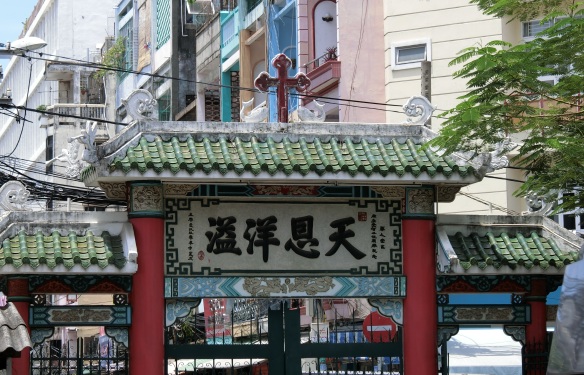In the middle of An Phu district where we live, is the market I go to to get fresh fruits and vegetables. It is a very local market, most of the times I am the only Westerner, even only non-Vietnamese. It is the length of one street with some vendors on the side street, but mostly everyone is packed here, both vendors and buyers.

Normally crowded around 7 or 8 am.
I have found the best watermelons, and I know which of the ladies to go to for papaya, mango and other favourites. The fruits in season are easy to spot: many vendors have them. The prices may vary daily, so I usually check the price but noticed locals don’t really haggle, and have given up on that.

Some fruits are found all year around, while others are seasonal, but may have 2 or 3 seasons per year.

This man peels the pineapple for the same price, usually 15,000 dong each, though this morning the price had gone up to 16,000 dong (0,6 euros to 0,64 euros).
My favourite saleswoman, my mango lady, is very talcative. She probably tries to explain why some of the mangoes or mangosteens or dragonfruit are more expensive than the others, but my Vietnamese is too limited to understand her, so I just nod. And buy whichever looks better.
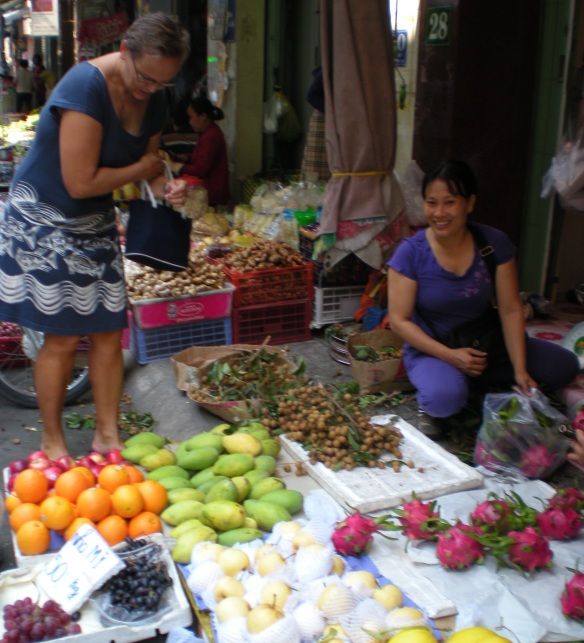
Around 9.30 and my mango lady has almost sold out her daily produce.

Much more choice at 7 am, so I usually try to get there early.
The market opens early, and if I get there around 7 am, it is already full of action. Besides fruits, there are also vegetables, tofu, meats, fish, poultry (alive and dead), bread, ready dishes, underwear and motobike socks and gloves available. And the sellers are not organised by type of offering, so next to the chicken, there may be vegetables or tofu with clothes next to those.

When there are no officials around, the vendors spread their baskets and boxes on the street.

Do you want meat or fabric? I am still not sure how many of the vendors live in the houses behind the sales front. Not all but probably many.

You get plenty of visibility when you display the underwear on the electricity pole.

Children’s clothes are also sold next to houshold goods and fermented dishes and pickles.
Poultry is sold live or dead. If you are not careful, you will witness how the neck of the chicken is twisted the final time. Naturally, chicken are plucked on the spot. Meat is sold in Asian style: all parts of the animals are used and they are also on display on the counter.

With their legs tied, the chicken are usually quite calm. Or maybe they realised what happened to one of them who is being plucked.

Typical display: poultry sliced open, so that even the eggs can be seen.
Meat sometimes looks good, but I still have not bought any from here. My Vietnamese would not be sufficient to understand when the meat has been slaughtered and how the cold chain has been kept. And anyway the sellers could be saying anything they want.

All meat parts are sold and also used in Vietnamese kitchen.
I missed the moment of a salesman chopping the heads of frogs with scissors. Frogs are commonly found at markets, as is seafood of different sorts. Vietnamese love their little snails and shellfish. Some of the fish actually looks quite nice, but it it has been grown in a place like our local ditch, it probably tastes just like mud and is full of toxins.
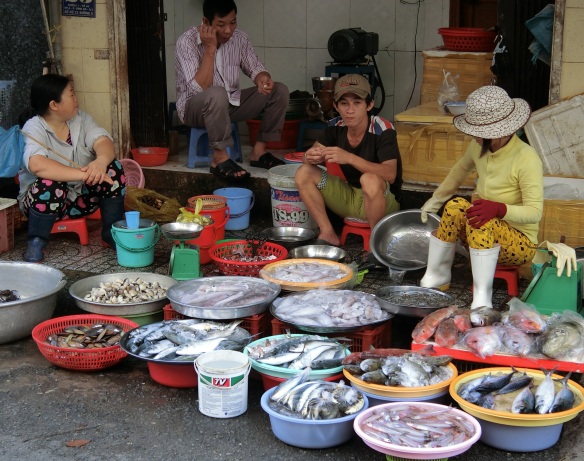
There is often ice or cold running water to keep the fish and seafood fresh.
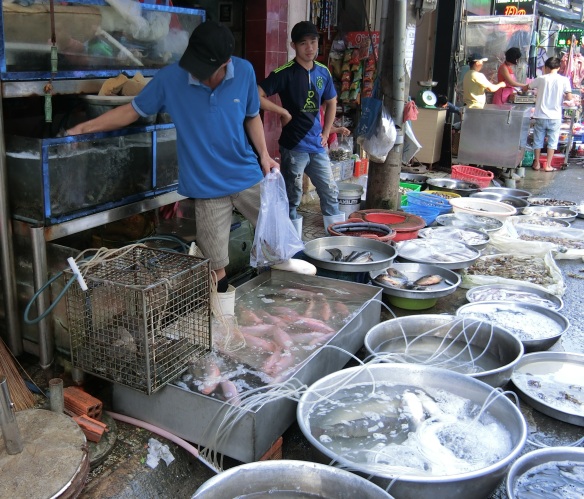
Nothing unusual in stepping into the fish tank.
Most people come to the market by motorbike and some by bicycle. And no question to leave the bikes at the beginning of the street: everybody rides up and down the street. Actually, if you park your bike and venture two tables away, you get yelled at because you are blocking the other vendor’s parking spot. So you move amongst the fruits, veggies, clothes, shrimp vats and other bikes and motorbikes.

Don’t ask me anything about the cleanliness of the produce. Some are kept on the sidewalk or the pavement, but some look clean and nice. But there are hardly any flies, not even at a later hour, like 11 am.

Bamboo shoots, banana blossomes I know, but there are plenty of greens I have no clue what they are or how to use them. But they still look nice.

More exotic or strange vegetables: ocra, carambola, banana blossom and flowers.
I also enjoy going to the market as it is a splendid display of colours. And the fruits and vegetables are always laid out nicely in piles, pyramids or bundles. I strongly recommend a visit for everyone living in Saigon.
